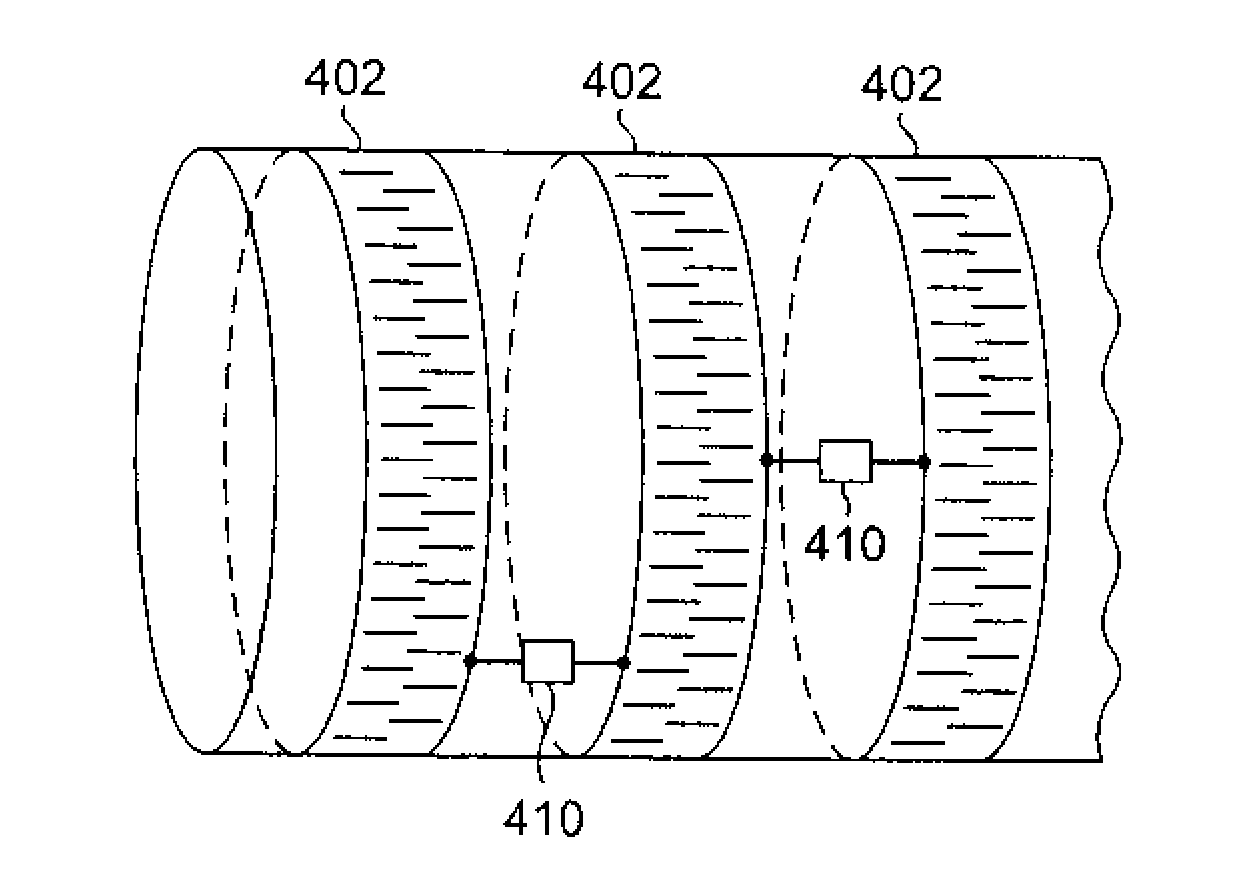Thrombolysis Catheter
a thrombolysis catheter and catheter technology, applied in the field of thrombolysis catheters, can solve the problems of stroke, even death, and the hinderance of local thrombolysis procedures, and achieve the effect of reducing the stress placed on the surrounding blood vessel(s)
- Summary
- Abstract
- Description
- Claims
- Application Information
AI Technical Summary
Benefits of technology
Problems solved by technology
Method used
Image
Examples
Embodiment Construction
[0035]The present invention now will be described more fully hereinafter with reference to the accompanying drawings, in which several embodiments of the present invention are shown. This invention may, however, be embodied in different forms and should not be construed as limited to the embodiments set forth herein.
[0036]In many embodiments of the present invention, a thrombolysis catheter is provided in which electroactive polymer actuators are integrated into the thrombolysis catheter structure.
[0037]Actuators based on electroactive polymers are preferred for the practice of the present invention due to their small size, large force and strain, low cost and ease of integration into the thrombolysis catheters of the present invention.
[0038]Electroactive polymers, members of the family of plastics referred to as “conducting polymers,” are a class of polymers characterized by their ability to change shape in response to electrical stimulation. They typically structurally feature a c...
PUM
 Login to View More
Login to View More Abstract
Description
Claims
Application Information
 Login to View More
Login to View More - R&D
- Intellectual Property
- Life Sciences
- Materials
- Tech Scout
- Unparalleled Data Quality
- Higher Quality Content
- 60% Fewer Hallucinations
Browse by: Latest US Patents, China's latest patents, Technical Efficacy Thesaurus, Application Domain, Technology Topic, Popular Technical Reports.
© 2025 PatSnap. All rights reserved.Legal|Privacy policy|Modern Slavery Act Transparency Statement|Sitemap|About US| Contact US: help@patsnap.com



